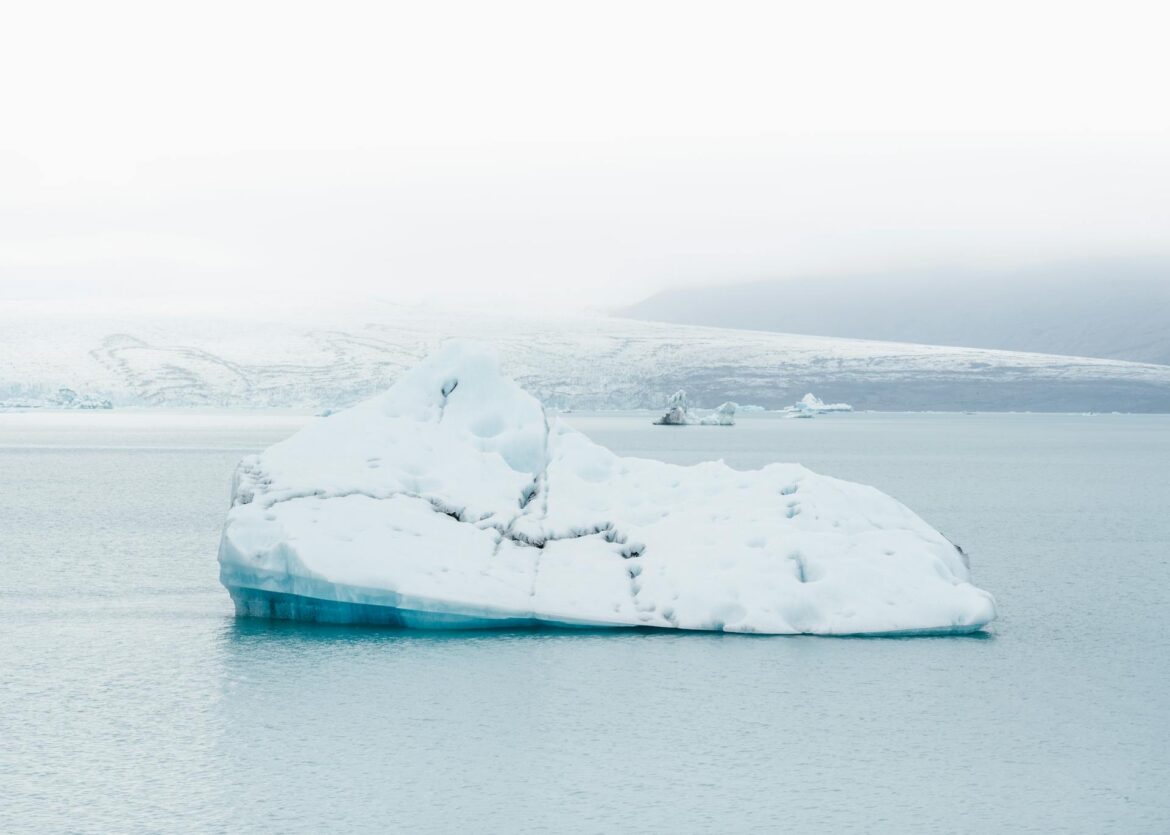Global warming is an escalating crisis that is causing profound changes in our planet’s climate systems. One of the most visible and alarming consequences of global warming is the rapid melting of polar ice caps. These vast expanses of ice at the Earth’s poles play a crucial role in regulating the planet’s climate and are home to unique ecosystems. However, rising temperatures due to human activities have led to accelerated melting, with far-reaching implications for the environment, wildlife, and global sea levels. In this article, we will explore the impact of global warming on polar ice caps and the urgent need for action to address this pressing issue.
- Accelerated Melting of Polar Ice Caps:
The polar ice caps, located in the Arctic and Antarctic regions, are massive sheets of ice covering landmasses and floating on the ocean’s surface. These ice caps have been shrinking at an alarming rate due to rising global temperatures. According to scientific studies, the Arctic has lost an average of 12.8% of its sea ice per decade since 1979, while Antarctica has experienced significant ice loss from its ice shelves.
The primary driver of this accelerated melting is the increase in greenhouse gas emissions, primarily carbon dioxide, from human activities such as burning fossil fuels, deforestation, and industrial processes. These gases trap heat in the Earth’s atmosphere, leading to a rise in global temperatures and causing polar ice to melt at unprecedented rates.
- Rising Sea Levels:
One of the most immediate and visible consequences of polar ice melt is the rise in global sea levels. As ice sheets and glaciers on land melt, they contribute freshwater to the oceans, causing sea levels to rise. This phenomenon poses a significant threat to coastal communities, low-lying islands, and vulnerable ecosystems.
Rising sea levels can lead to coastal erosion, flooding, and saltwater intrusion into freshwater sources, impacting agriculture, infrastructure, and human settlements. Additionally, increased flooding can disrupt marine habitats and threaten biodiversity, including coral reefs, mangroves, and estuaries.
- Disruption of Ecosystems:
The melting of polar ice caps has far-reaching implications for Arctic and Antarctic ecosystems, which are adapted to extreme cold and ice-covered environments. These regions are home to a diverse array of wildlife, including polar bears, penguins, seals, and marine birds, which rely on sea ice for breeding, foraging, and raising their young.
As ice melts, the habitat for these species diminishes, leading to loss of breeding grounds, reduced food availability, and increased competition for resources. This disruption can have cascading effects throughout the food chain, affecting populations of prey species and predators alike.
- Feedback Loops:
One of the most concerning aspects of polar ice melt is the potential for feedback loops that can amplify the effects of global warming. For example, as ice melts, it exposes darker surfaces such as water or land, which absorb more solar radiation than reflective ice. This leads to further warming and melting, creating a self-reinforcing cycle known as the ice-albedo feedback loop.
Additionally, melting permafrost in the Arctic releases stored carbon dioxide and methane, potent greenhouse gases that further contribute to global warming. These feedback loops can accelerate climate change and make it increasingly difficult to reverse the effects of polar ice melt.
- Impact on Global Climate:
The melting of polar ice caps has significant implications for global climate patterns, weather systems, and ocean currents. Changes in sea ice extent and temperature can alter atmospheric circulation patterns, leading to shifts in weather patterns, such as changes in precipitation, storm intensity, and temperature extremes.
Furthermore, the melting of ice caps can disrupt ocean currents, such as the Gulf Stream, which plays a crucial role in regulating climate in regions such as Europe and North America. Changes in ocean circulation can affect marine ecosystems, fisheries, and weather patterns, with far-reaching consequences for human societies.
Conclusion:
The impact of global warming on polar ice caps is a stark reminder of the urgent need for action to address climate change. The accelerating rate of ice melt threatens not only polar ecosystems and wildlife but also coastal communities and global sea levels. To mitigate the effects of polar ice melt and limit further climate change, concerted efforts are needed to reduce greenhouse gas emissions, transition to renewable energy sources, and protect vulnerable ecosystems. By taking decisive action now, we can help preserve the Earth’s frozen frontiers and ensure a sustainable future for generations to come.



